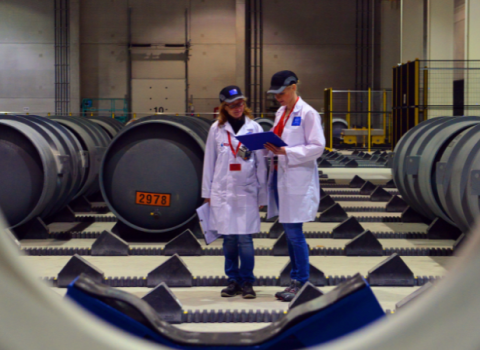At COP28, US climate envoy John Kerry announced a plan to bolster links with other countries to commercialise the as yet unproven technology. Where geopolitical rivals like China fit into this plan remains unclear

US climate envoy John Kerry speaking at COP 28. Photo: Mahmoud Khaled / COP28 / Flickr
The US has stretched out a hand to other countries to work together on fusion energy R&D, and create global standards to regulate the technology so it becomes easier to commercialise.
Washington’s climate envoy John Kerry talked up fusion energy at the COP28 climate conference in the United Arab Emirates, but said it needed international collaboration to get up to speed in time.
“Significant scientific and engineering challenges exist,” he said at an Atlantic Council event at the conference. “It is clear we cannot realise this grand ambition, perhaps not at all, but certainly not at the pace we need to, doing it alone. Science is inherently international.”
In recent years there have been a series of scientific breakthroughs and an explosion of start-ups in nuclear fusion technology, which aims to harness the huge quantities of energy released when to atomic nuclei merge while in an ultra-hot plasma state.
In theory, fusion could be an emission-free and near limitless source of power. But there’s still no certainty as to when, if ever, fusion will become a real-world option. Start-ups in the field generally estimate commercially viable fusion should come online in the 2030s – although they are hardly neutral observers.
What’s more, the most recent report by the Fusion Industry Association (FIA), a trade body, warned that startups are facing a “valley of death” as they struggle to raise enough private capital to build expensive proof of concept machines.
Meanwhile, the vast government-led ITER fusion project in the south of France has faced numerous delays. It had been scheduled to achieve “first plasma” – when it for the first time mimics the fusion reactions that take place inside a star - in 2025, and but this timeline is now being reassessed after pandemic delays and difficulties with some components. Further experimental steps aren’t anticipated to happen until at least 2035.
ITER is only an experimental project, designed merely to test the feasibility of a fusion plant hooked up to the grid.
All the while, fusion is competing for public funding against proven green energy sources like solar and wind.
US-led collaboration
It’s in this context that the US launched the strategy to globalise fusion research internationally.
“The US intends to engage with global partners to help resolve remaining research challenges through collective action,” it says.
It involves a list of ideas to knit countries’ efforts together, like sharing data frameworks, sharing access to fusion facilities, and splitting the cost of building expensive test facilities.
The US also appears to want to lead any nascent governance of fusion energy. The strategy calls for “common frameworks for benchmarks and standards” and coordination on regulatory frameworks.
There’s also a strong focus on intellectual property protection, and safeguards against “predatory economic practices.”
“They recognise there is still a lot to do on research and development,” said Greg De Temmerman, former ITER coordinating scientist from 2014-2020. “There have been many discussions recently about preparing the next steps: what enabling technologies will fusion need? How to regulate fusion reactors?”
In November, the US also signed a fusion partnership with the UK, which hosts three fusion startups, to share facilities, standardise regulatory frameworks, and exchange on remaining technical challenges to fusion.
Will China be involved?
The elephant in the room is whether the US and allies will share fusion technology with China, which has its own growing state and private fusion industry.
Chinese fusion company ENN reportedly received a recent investment of more than $100 million, although the country still only has two fusion start-ups, compared to the US’s 25, according to the most recent tally by the FIA.
At COP28, Kerry called the development of fusion energy a “human challenge, a mankind challenge”.
But some in the industry see the US’s new strategy as a clear attempt to gather democratic allies and secure a technological edge over Beijing.
“The FIA welcomes the US’s new international strategy for fusion because it will allow like-minded countries to work together to accelerate fusion commercialisation,” said Andrew Holland, FIA chief executive. “China is rapidly increasing its efforts on fusion: it’s time for the US to assemble its allies to make sure we win the race to fusion energy.”
Western allies are already circling the wagons against China in other technologies, like quantum. A new quantum technology alliance that launched last year is explicitly only open to countries with democratic values.
However, shutting out Beijing would be the opposite of the approach taken by ITER, which is a decades long collaboration between the EU, US, China, India, Japan, South Korea and Russia.
Having weathered plenty of geopolitical turbulence during its history, the ITER project remains one of the last remaining threads of scientific collaboration between the west and Russia since Moscow invaded Ukraine in 2022.





 A unique international forum for public research organisations and companies to connect their external engagement with strategic interests around their R&D system.
A unique international forum for public research organisations and companies to connect their external engagement with strategic interests around their R&D system.